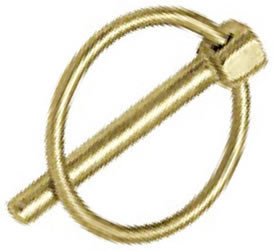
Have you heard of lynch pins? They are commonly used to secure axles. Wheels, for instance, are often mounted with a lynch pin. Lynch pins prevent wheels and other objects from falling off axles. They are small, simple fasteners that play an important role in securing axles.
Overview of Lynch Pins
Lynch pins are self-locking fasteners that are inserted through an axle. Also known as hitch pins, they are designed to keep objects on axels. As an axle moves, the object may slide off. A lynch pin prevents this from happening by blocking the object.
Benefits of Lynch Pins
Lynch pins are easy to use, requiring just a few simple steps. You can use a lynch pin by placing the object on the axle. After positioning the object, you can then insert the lynch pin through the end of the axle. With a lynch pin, the object won’t be able to slide off the axle. The lynch pin will block the object while ensuring that it doesn’t fall off.
You can find lynch pins in different styles. Standard lynch pins consist of a shaft with a ring. To use them, you just need to insert the shaft part into a predrilled hole at the end of an axle. There are also hitch pins with handles. Some hitch pins have a round handle, whereas others have a square handle. They work the same by securing objects to axles, but they offer an ergonomic handle that allows for easy removal.
Lynch pins are designed to resist shear forces. You can’t rely on screws or bolts to prevent objects from falling off axles. Traditional fasteners such as these are often susceptible to loosening when exposed to shear forces. Lynch pins, however, offer a solution. They will resist shear forces while subsequently keeping objects on axles.
Lynch Pins vs Cotter Pins
There are also cotter pins. Like lynch pins, clotter pins are commonly used to secure axles. They consist of a bent — typically R-shaped — piece of metal. You can use a cotter pin by inserting it through the end of an axle as well.
Only part of a typical R-shaped cotter pin is inserted through the end of the axle, though. R-shaped cotter pins have a straight side and a curved side. The straight side is inserted through the end of the axle, whereas the curved side wraps around the side of the hole.
